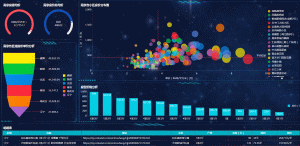Introduction To Python Set and Frozen-set Methods
Python is a widely-used programming language. No doubt that learning Python will bring you better job prospects. The advantage of Python is that it is generally smaller than other languages like Java. As a programmer, you will need to type only fewer indentations, which makes them highly readable highly. Many global market leaders like Google, Facebook, Amazon, Instagram, etc. are using Python. Learning Python will help you find a career in machine learning as well. A program widely used in GUI applications, image processing, multimedia, text processing and many more, Learning Python is highly advisable if you are looking at a career in IT.
Sets in Python
Sets in Python represent a collection of data. This unordered collection is mutable and iterable. It doesn’t have duplicate elements. The Python set is similar to the mathematical set. Using a set is recommended over a list because the set has several advantages. Based on the hash table, it is very easy to check if a particular element is included in the set. This is not possible if you use a list.
Properties of a Python set()
There are no parameters to create an empty set. If you create a dictionary using a set, the values will not remain after conversion. However, the keys will remain.
Sets have many methods:
- Method of addition (x): This method is used to add one or more items to a set if currently it is not included in the set.
- Method of union (s): This method is used to unite two sets. The operator use is ‘|’, which is similar to set1.union(set2)
- Method of intersection (s): This method is used for the intersection between two sets. You can also use the ‘&’ sign as the operator here.
- Method of difference (s): This method is used to return a set that contains replicates the elements present in the invoking set, but not present in the second set. The operator used here is ‘-‘.
- Method of the clear set (): This method is used to empty the whole set.
Operators for sets and frozen sets
| Operator | Function |
| key in s | containment check |
| key not in s | non-containment check |
| s1 == s2 | s1 is equal to s2 |
| s1 != s2 | S1 is not equal to s2 |
| s1 <= s2 | s1is subset of s2 |
| s1 < s2 | s1 is a proper subset of s2 |
| s1 >= s2 | s1is superset of s2 |
| s1 > s2 | s1 is a proper superset of s2 |
| s1 | s2 | the union of s1 and s2 |
| s1 & s2 | the intersection of s1 and s2 |
| s1 – s2 | the set of elements in s1 but not s2 |
| s1 ˆ s2 | the set of elements in precisely one of s1 or s2 |
Frozen sets
Frozen sets, unlike the set, are immutable. Once created, the frozen set remains the same. It cannot be changed. This is the reason we use a frozen set as a key in Dictionary. It accepts an iterable object as its input and makes them unchangeable. However, it is not guaranteed that the order of the element will be preserved. In a frozenset, if no parameters are passed to the () function, an empty frozen set is returned. If you change the frozenset object by mistake, you will get an error saying that the item assignment is not supported by frozenset object.
Conclusion
Equivalent to the data set in mathematics, Python set is a data structure similar to the mathematical sets. It consists of several elements, but the order in which the elements should be deployed in the set is undefined. You can perform addition, deletion, iterate, union, intersection, and differences on the sets.



